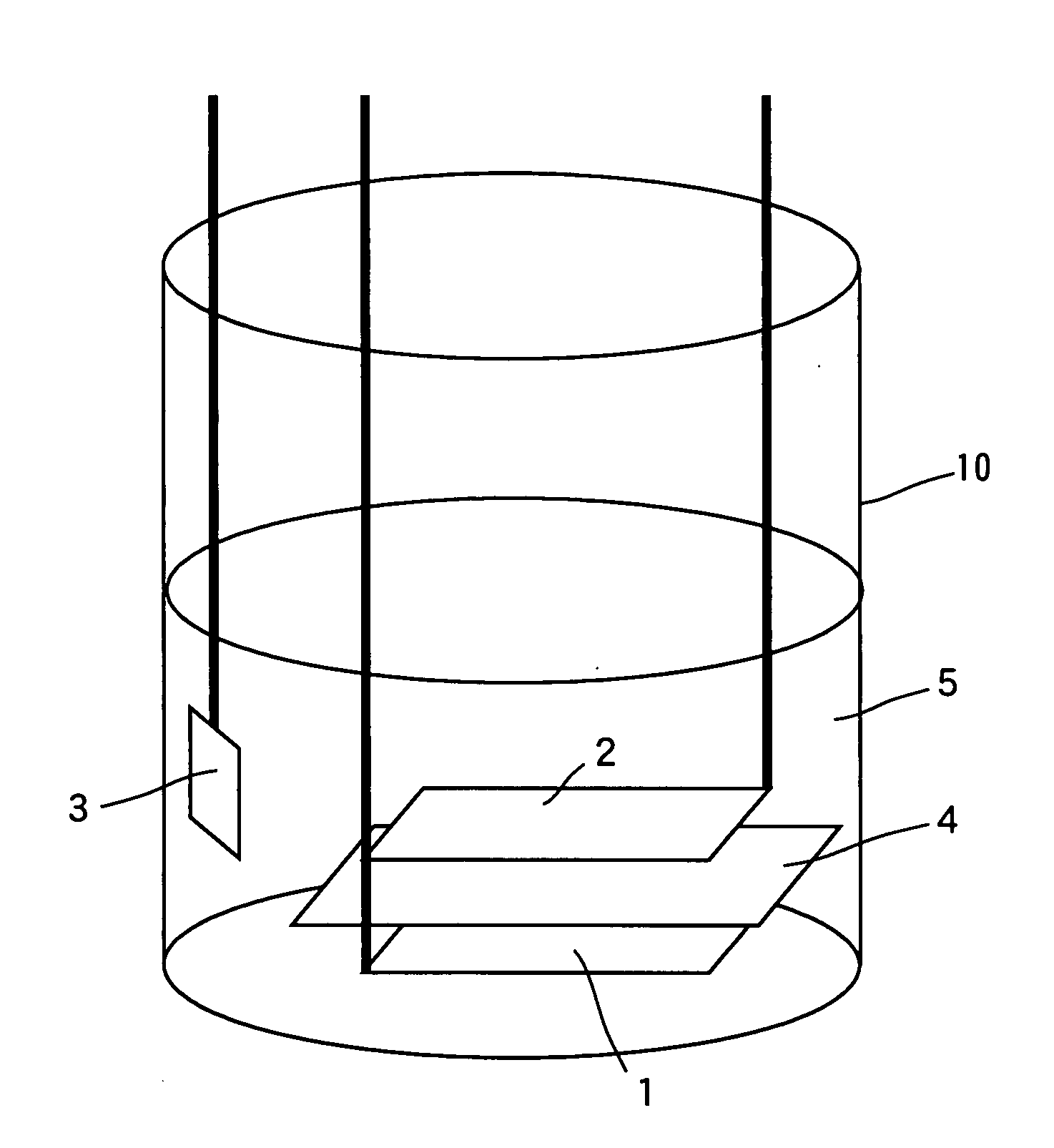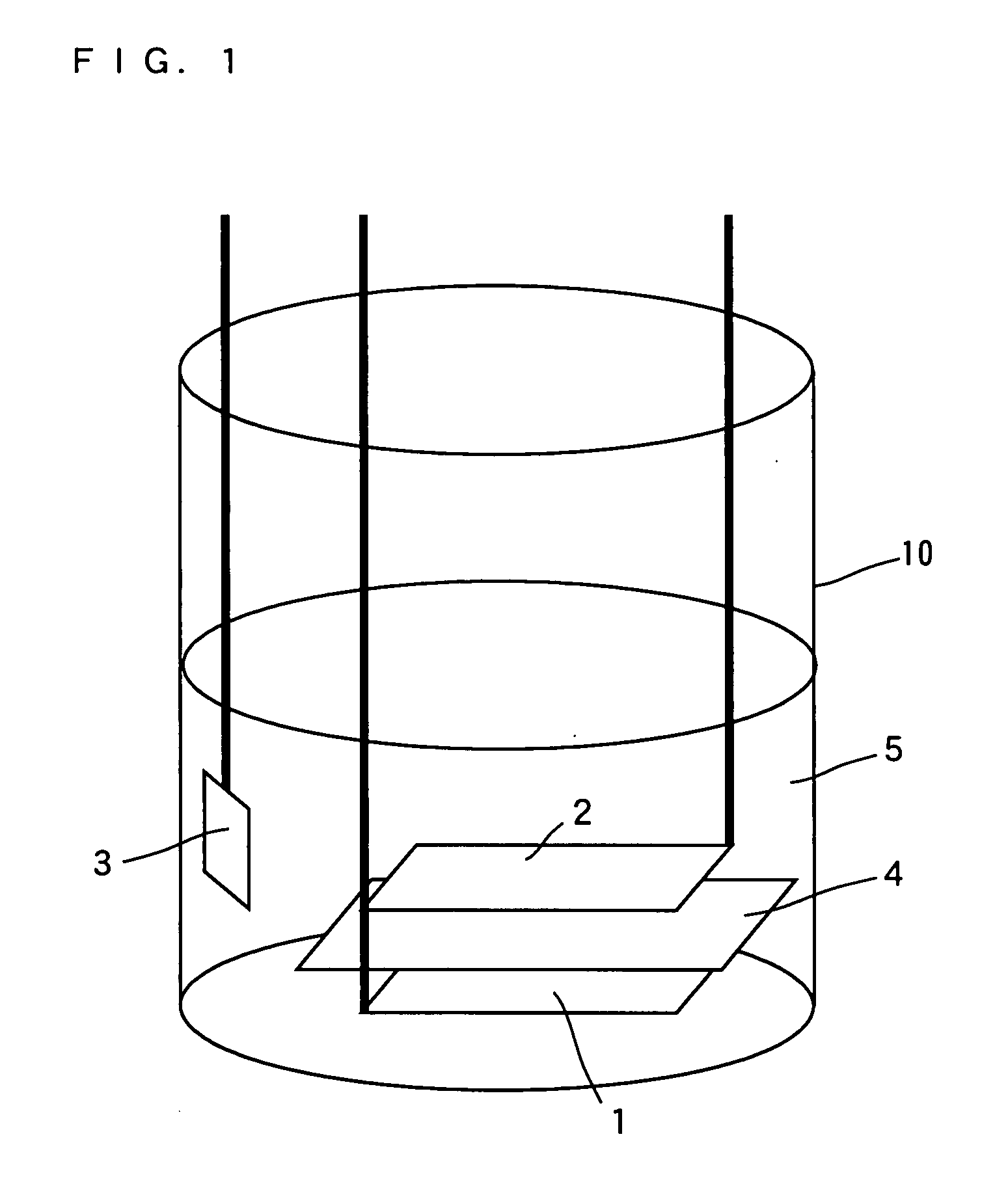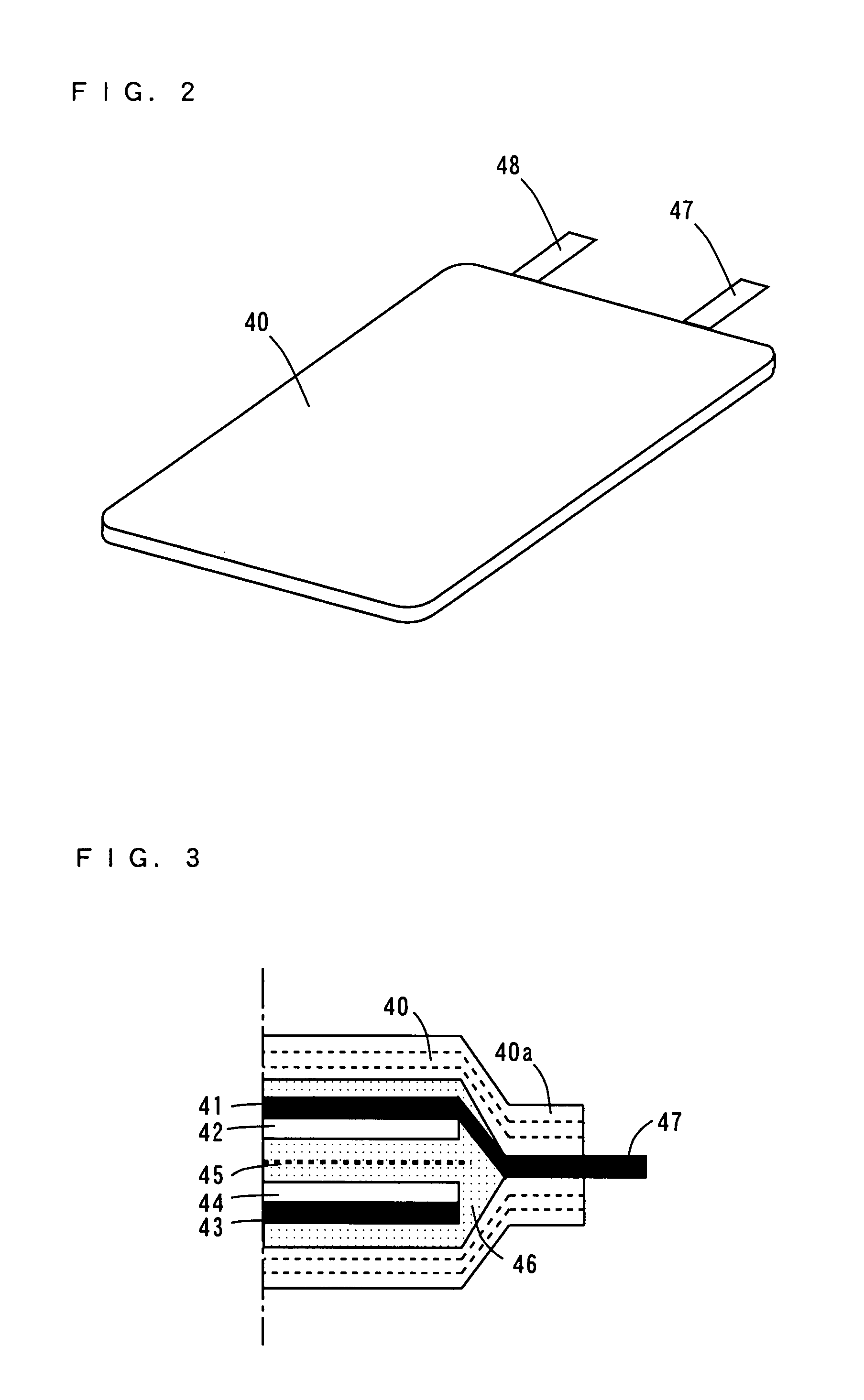Positive Electrode and Non-Aqueous Electrolyte Secondary Battery
a secondary battery and electrolyte technology, applied in the direction of non-aqueous electrolyte cells, cell components, electrochemical generators, etc., can solve the problems of limited materials as resources, rise to safety concerns, and the discharge capacity cannot be increased, so as to reduce the cost and reduce the cost
- Summary
- Abstract
- Description
- Claims
- Application Information
AI Technical Summary
Benefits of technology
Problems solved by technology
Method used
Image
Examples
first embodiment
(1) First Embodiment
Manufacture of Positive Electrode
[0046]A material (hereinafter referred to as “positive electrode material”) containing for example 85 parts by weight of sodium manganate (NaxMnO2+y)(for example 00.7MnO2+y where x in the above formula is substituted by 0.7.
[0047]According to the embodiment, as an example of the sodium manganate, sodium manganate having a hexagonal crystal system (crystalline structure) and defined by JCPDS (Joint Committee on Powder Diffraction Standards) as card No. 270751 is used. The JCPDS has a database of X-ray diffraction data of about 6000 kinds of inorganic and organic compounds.
[0048]Note that examples of sodium manganate that can be used in place of card No. 270751 sodium manganate described above may include card Nos. 250844, 720415, and 720831 sodium manganate of an orthorhombic system (S. G. Pmmn), card Nos. 270747 and 270752 sodium manganate of an orthorhombic system (S. G. C), card No. 380965 sodium manganate of an orthorhombic sys...
second embodiment
(2) Second Embodiment
Manufacture of Positive Electrode
[0073]The same positive electrode as that of the first embodiment is produced.
[0074]
[0075]A rolled foil of surface roughened copper as thick as 26 μm for example having a surface formed into an irregular shape with copper precipitated thereon by an electrolytic method is prepared as a negative electrode collector.
[0076]Elemental tin (Sn) having a thickness of 2 μm for example is deposited on the rolled foil described above, so that a negative electrode active material layer is formed. Note that the deposited elemental tin is amorphous.
[0077]Then, the rolled foil having the negative electrode active material layer formed thereon is cut into a 2-by-2 cm piece and a negative electrode tab is attached to the rolled foil, so that the negative electrode is produced.
[0078]The arithmetic mean roughness Ra as a parameter representing a surface roughness defined by Japanese Industrial Standards (JIS B 0601-1994) in the surface-roughened ro...
third embodiment
(3) Third Embodiment
[0096]A non-aqueous electrolyte secondary battery according to a third embodiment is different from the non-aqueous electrolyte secondary battery according to the second embodiment in the structure of the negative electrode, which will be described in detail.
[0097]
[0098]A rolled foil of surface roughened copper as thick as 26 μm for example having a surface formed into an irregular shape with copper precipitated thereon by an electrolytic method is prepared as a negative electrode collector 41.
[0099]A negative electrode active material layer 42 of elemental germanium (Ge) as thick as 0.5 μm for example is deposited on the negative electrode collector 41 of the rolled foil as described above by a sputtering apparatus shown in FIG. 4. The deposition condition is given in Table 1. Note that the deposited elemental germanium is amorphous.
TABLE 1sputter sourceRF frequency13.56MHzRF power200Wargon flow rate50sccmgas pressure1.7 to 1.8 × 10−1 Patime30minthickness0.5μm
[0...
PUM
| Property | Measurement | Unit |
|---|---|---|
| mean roughness | aaaaa | aaaaa |
| mean roughness | aaaaa | aaaaa |
| arithmetic mean roughness | aaaaa | aaaaa |
Abstract
Description
Claims
Application Information
 Login to View More
Login to View More - R&D
- Intellectual Property
- Life Sciences
- Materials
- Tech Scout
- Unparalleled Data Quality
- Higher Quality Content
- 60% Fewer Hallucinations
Browse by: Latest US Patents, China's latest patents, Technical Efficacy Thesaurus, Application Domain, Technology Topic, Popular Technical Reports.
© 2025 PatSnap. All rights reserved.Legal|Privacy policy|Modern Slavery Act Transparency Statement|Sitemap|About US| Contact US: help@patsnap.com



